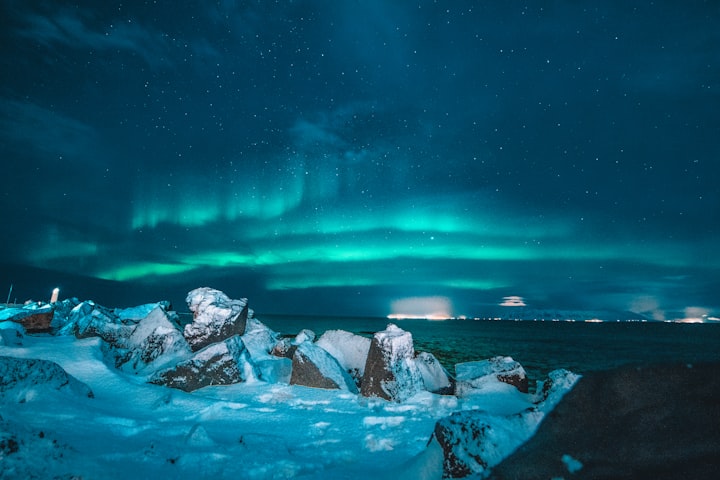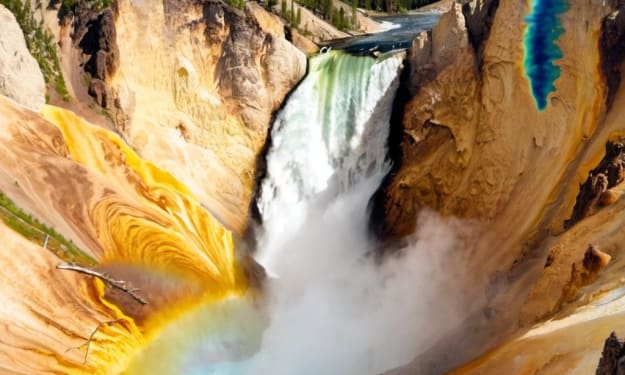THE AURORA(NORTHERN) LIGHTS
LET'S FEEL THE BEAUTY OF NORTH

Lights in the sky have entranced us for millennia. The lights in the far north and south of our planet are a portion of the more celebrated ones.
What was around there?
Travel to Antarctica or the Cold and you'll begin thinking you are having pipedreams. During the nights, the sky will in a real sense shine.
In the Northern Half of the globe these lights are known as the aurora borealis. They are important for a bigger light wonder known as aurora. In the Southern Half of the globe, these lights are known as the aurora australis or southern lights. In specific nations like Russia, Aurora Borealis are known as the white evenings. Despite the half of the globe, the aurora has a uniform reason.
The aurora is the aftereffect of floods of electrons responding to the attractive field of the Earth. At far northern scopes, the attractive field is near the outside of the planet. Where the field enters the climate, electrons respond with gases, for example, oxygen and produce the impact known as Aurora Borealis.
The aurora is obviously excellent. The lights show up in an assortment of structures, yet frequently join a gleam and drapery like roll. The light in a real sense appears to gradually stream across the sky similar as a sheet in the breeze. The lights, notwithstanding, can likewise show up in a bend like a rainbow or long queues. The particular shape is totally subject to how the attractive field is cooperating with the air.
On uncommon events, auroras may show up nearer to the equator. This uncommon occasion is related with gigantic sun based occasions. At the point when our sun kicks out a huge sunlight based flare, the subsequent sun oriented radiation players our attractive field. This battering will really push the field once again into the environment of the planet. At the point when this occurs, individuals all throughout the planet are allowed an opportunity to see the aurora without venturing to every part of the far north or south.
The aurora is genuinely something astounding to see. On the off chance that you are constrained to encounter it, Gold country and Norway are viewed as the best survey areas.
7 Magical Places to View Auroras
1. Iceland

Even without the northern lights, Iceland is an otherworldly place to visit, with glaciers, geysers, massive waterfalls, and volcanoes. Both the latitude and longitude of the country favor aurora viewing, but the weather doesn’t always cooperate. However, a good coastline road around the country lets you chase clear skies.
2. Fairbanks, Alaska

Located just two degrees below the Arctic near international airport and close to the impressive Denali National Park, Fairbanks is the best place in the U.S. to take in the northern lights. It even has its own forecast system and offers tours to take visitors far from city lights.
3. Yellowknife, Canada

This Northwest Territories capital on the shores of Great Slave Lake boasts its own Aurora Village and special activities for northern lights tourism.
4. Tromsø, Norway

The largest urban area in northern Norway is 217 miles north of the Arctic Circle, but thanks to the Gulf Stream the coastline has surprisingly moderate temperatures. It also has beautiful scenery, magnificent fjords, and the Lyngen Alps.
5. Northern Sweden and Finland

Sweden’s northernmost town of Kiruna is a gateway for nearby attractions. There is the ICEHOTEL, mountainous Abisko National Park, the local Sami culture, and plentiful reindeer. A short drive from the town takes you to a good spot for aurora viewing. The weather here is much more stable than the Norwegian coast, but it’s colder too.
6. Greenland

It’s possible to be too far north to see the northern lights—such is the case in northern Greenland. But head farther south for beautiful auroras and attractions like Qaleraliq Glacier, which has small floating icebergs even in summer.
7. Tasmania and New Zealand

You hear about northern lights more often than southern lights (aurora Australis) because there are fewer locations to see auroras from the Southern Hemisphere. Your best chance is on the southern tip of both Tasmania (Australia) and New Zealand, where a dark sky will help you see any active auroras over the southern horizon. These are the closest accessible places to the south magnetic pole, outside of Antarctica.






Comments
There are no comments for this story
Be the first to respond and start the conversation.